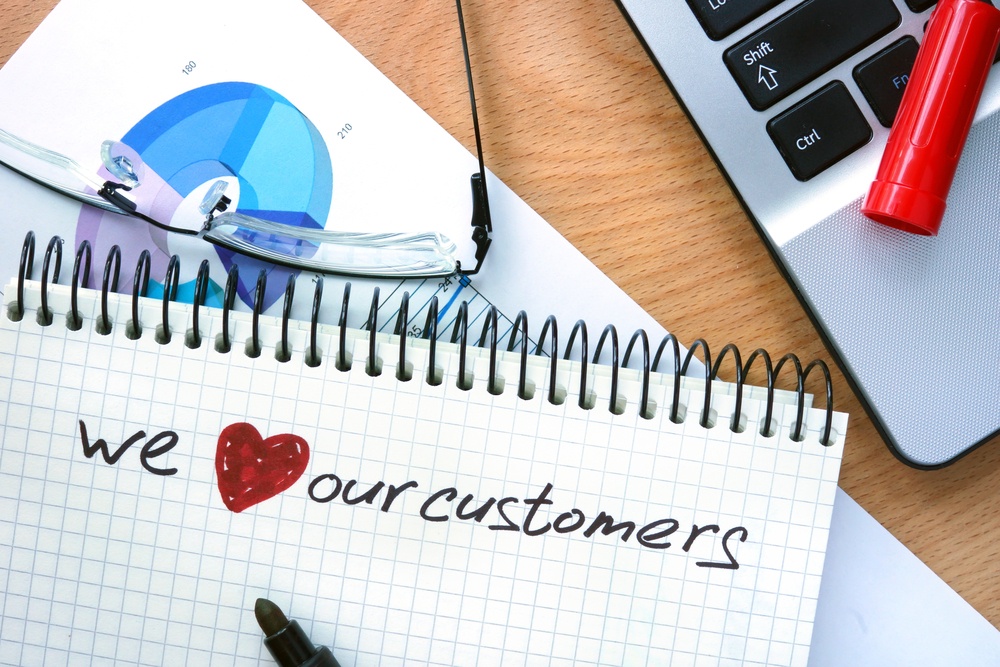It’s nearly impossible to overstate how important client retention is for a business. If you don’t believe us, just consider your company’s customer lifetime value (CLV).
CLV represents the dollar amount that a customer is worth to a business, from their first purchase through their last. It’s an important metric to focus on because even small increases in CLV can result in big, healthy boosts in revenue.
Groove HQ illustrates this point nicely in their example below:
If your SaaS customers pay you $50 per month, and the average customer stays with you for 10 months, then your average CLV is $500.
With 1,000 customers, simply increasing that average to 12 months — just 20% — would add $100,000 in revenue to your business.
Below you’ll find client retention strategies that will boost your brand in the eyes of consumers and directly improve your bottom line.
1. Be a master of anticipation.
Don’t wait for customers to come to you with questions. The best way to engage and retain clients is by anticipating their questions and concerns, and then proactively presenting solutions before they recognize they’re even in need of one.
A great example of this is when credit card companies send clients a reminder that their bill is almost due.
Talk to anyone with a credit card and I guarantee they’ll tell you they’d prefer a gentle reminder that a bill is due soon, as opposed to only receiving communication after the due date has passed saying that they now owe late fees.
In this situation, what could be a potentially negative brand experience – the unpleasant surprise that your account has been slammed with penalties – is changed into an opportunity to create transparency between brand and client, as well as a touchpoint for additional communication.
2. Implement a drip funnel to keep communication flowing, and to stay in people’s minds.
Drip campaigns are a fantastic tool to help streamline and maximize your anticipatory communication, and they’re a great way to remain relevant in people’s minds. You’ve probably heard of them before, but there are some common misconceptions about why and how drip campaigns should be implemented.
To clarify, drip campaigns are a strategic series of automated emails sent to targeted recipients over a set period of time, designed in line with a common Call to Action. Companies who automate emails are 133% more likely to reach their customers during crucial decision-making points. You should know that marketers leveraging drop campaigns have seen client conversion rates climb as high as 50%. If personalized elements like name and data-driven product/service suggestions are included, marketers see 6X higher transaction rates, 41% higher unique click rates and 18X more revenue vs generic, mass-mailing campaigns.
3. Dormant customers are not necessarily ex-customers.
To piggyback on the last point, just because a client hasn’t engaged with your brand in a while (even, possibly, a very long while) it doesn’t mean you should stop trying to bring them back into the fold. Drip campaigns can be used to reengage even your oldest customers with attractive incentives to purchase again.
And when that communication is personalized – “Hi John, how are you finding your current 6GB cell phone plan? Did you know that right now you can upgrade to an unlimited data plan for just $9 extra per month with our new offer?” – it shows that you know exactly how they’ve interacted with you in the past, that you recognize their individual needs and that you’re prepared to help them with highly-relevant service.
4. Deliver above-and-beyond customer service.
Thanks to high-profile incidents like this, we all know that customer service can make or break your brand’s public reputation. According to Jerry Gregoire, Chief Information Officer at Dell, “The customer experience is the next competitive battleground.” It’s because the customer service a client receive greatly impacts their future purchase decisions.
In 2016, 52% of consumers reported switching brands after receiving poor customer service. That’s a lot of lost customers – and an enormous amount of lost revenue – that likely could have been retained had companies designed their policies and error resolution procedures with the client in mind.
Whenever you make new implementations or changes to your business, consider how it will impact the customer experience you deliver.
5. Listen to negative feedback.
While you can try to minimize poor brand experiences, it’s inevitable that you’ll have an unhappy client somewhere along the way. When someone does speak out negatively, listen to what they have to say and try to discern the root of their problem. Start by asking yourself where in the purchase process they became unhappy, and then why they found your attempt at a solution dissatisfactory.
Successful client retention strategies continuously pinpoint areas where negative customer experiences occur and embrace a “learn from (and correct) your mistakes” mentality.
6. Follow up a sale with another sale. Don’t drop the ball or think the journey is done after you make an initial sale.
Some businesses consider their work done after a client converts. This is not, however, the way someone who values retention thinks. Brands who want to grow a true community of loyal customers with a high lifetime value see the first transaction as the start of a relationship.
Always look for well-timed opportunities to reach out (again, see why we think drip campaigns are massively helpful), add a personalized touch wherever possible, offer excellent customer service and proactively present clients with opportunities they might be interested in. After all, it’s reported that for each 1% of shoppers who return for a subsequent visit, overall revenue will increase by approximately 10%.
To find out more about Idomoo’s easy-to-use Personalized Video as a Service Platform (PVaaS™) and how we can help you reach your customers and drive action, contact us below.





